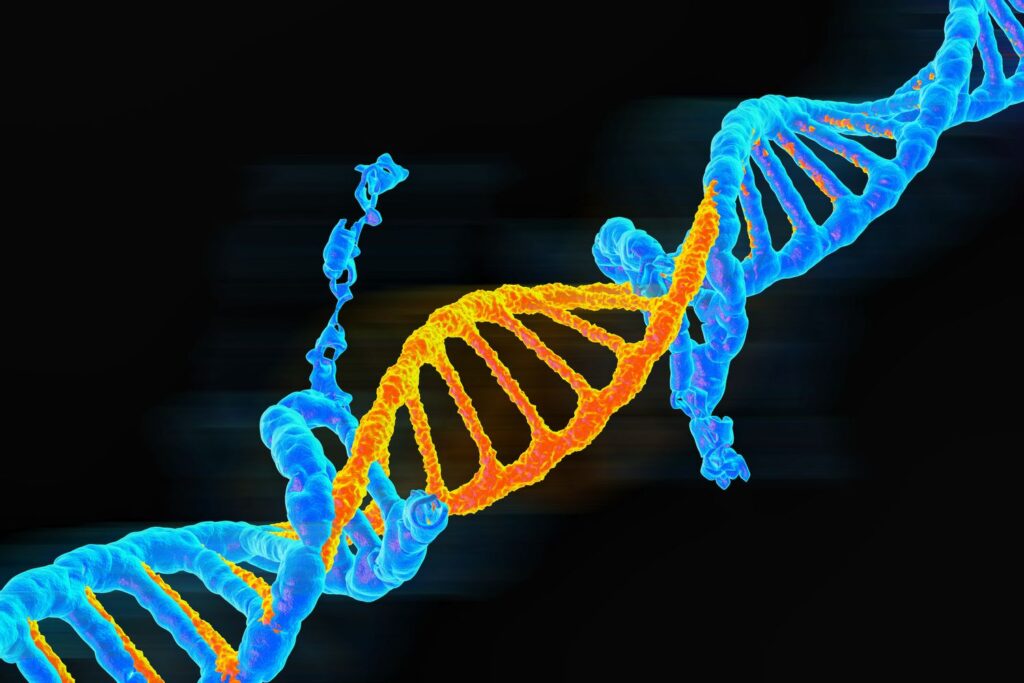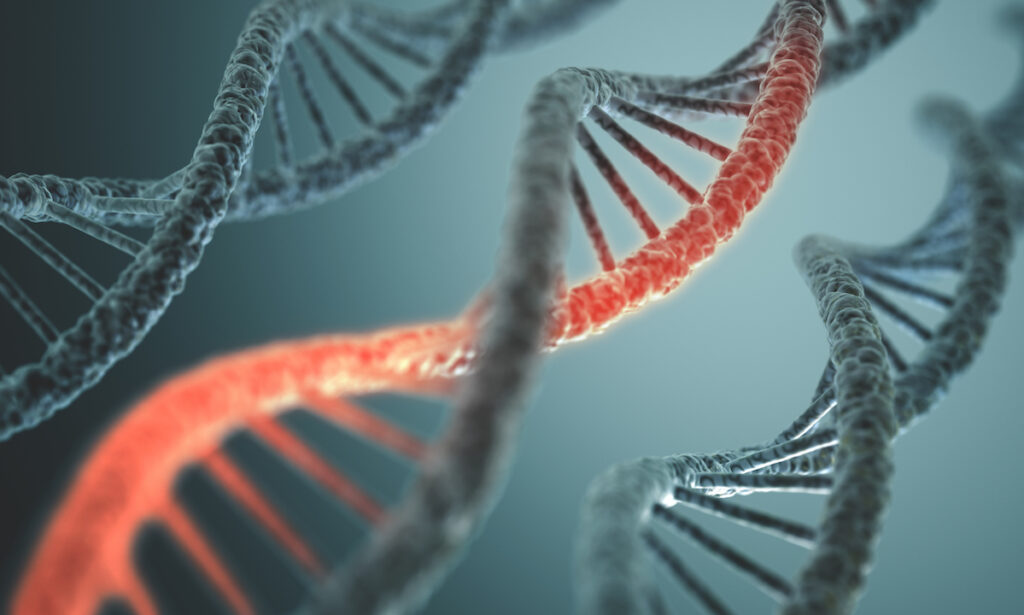
New research reveals a profound link between how our cells manage information and how they become vulnerable to disease—and possibly, aging itself
If DNA is the script of life, then epigenetics is its director—guiding how, when, and where each gene is expressed. For years, scientists believed that while genetic mutations were permanent changes to the script, epigenetic marks were more like temporary annotations, easily edited or removed. But a groundbreaking study has just turned that assumption on its head.
According to new research, epigenetic alterations—particularly DNA methylation—may actually precede and help cause genetic mutations. This discovery rewrites the story of how cancer begins, how our cells age, and what we might do to stay ahead of both.
Let’s explore what this means for your health, your future, and the emerging science at the intersection of genetics, longevity, and preventive medicine.
Epigenetics 101: The Hidden Layer Above Your DNA

Your genome—the sequence of DNA you inherit—is like a vast library of instructions. But your body doesn’t read every book in that library at once. Epigenetics refers to the chemical tags and structural changes that determine which genes are turned on or off in a given cell.
Key players include:
- DNA methylation – the addition of methyl groups to DNA, often silencing gene expression
- Histone modification – changes to proteins that organize DNA, altering how accessible certain regions are
- Non-coding RNAs – molecules that fine-tune gene activity without encoding proteins
Together, these mechanisms allow your body to adapt gene expression to your environment, lifestyle, and developmental stage.
But epigenetic changes aren’t always beneficial. Over time, especially under stress, inflammation, or toxin exposure, these patterns can shift in ways that promote dysfunction, aging, and disease.
The Breakthrough: When Epigenetic Marks Trigger Genetic Mutations
A collaborative study led by researchers at the University of Cambridge has revealed that epigenetic modifications can do more than silence or activate genes—they can influence where and how genetic mutations arise.
The study analyzed vast datasets of cancer genomes and found a consistent pattern: regions of DNA that were heavily methylated were more likely to undergo mutations, especially a type called “C-to-T transitions,” which are among the most common mutations in cancer.
Here’s why this matters:
- Methylation may make DNA more chemically unstable
Methylated cytosine (a DNA base) is prone to spontaneous deamination—a chemical reaction that converts it to thymine, creating a permanent mismatch in the genetic code. - These mutations can happen before cancer begins
The researchers found that methylation patterns observed in normal cells were strong predictors of mutation hotspots in cancer cells—suggesting that epigenetic changes set the stage long before disease appears. - This challenges the “mutation-first” model of cancer
Traditionally, we’ve assumed that random mutations in DNA cause cancer, and epigenetic shifts follow as the cell transforms. This new data suggests the reverse may sometimes be true: epigenetic “mismanagement” may lead the way.
Why This Is a Big Deal
This discovery links two of biology’s most important—but often separate—realms: epigenetics and genetic mutation. It suggests a continuum rather than a dichotomy between what we thought of as reversible regulation and irreversible damage.
It reframes cancer as an epigenetic disease
If changes in DNA methylation increase the likelihood of harmful mutations, then maintaining a healthy epigenetic environment becomes a powerful form of prevention.
It explains age-related mutation accumulation
As we age, our epigenetic patterns drift—a process known as epigenetic drift. This may partially explain why older individuals accumulate more genetic mutations, even in non-dividing cells.
It opens new therapeutic possibilities
Instead of just trying to fix broken DNA, we might intervene earlier by correcting or stabilizing epigenetic patterns—potentially preventing mutations from arising in the first place.
Epigenetic Health and Longevity: Why It Matters
Epigenetics is rapidly becoming a cornerstone of longevity science. Consider this:
- Epigenetic clocks are among the most accurate tools for measuring biological age
- Many age-related diseases show early signs of epigenetic dysregulation
- Lifestyle choices—nutrition, sleep, exercise, stress—have direct effects on DNA methylation
If mutations are the rust on the machinery of life, epigenetic dysfunction is the loosened bolt that lets the damage begin.
By maintaining a stable, balanced epigenetic landscape, we may not only reduce the risk of cancer, but also slow the cellular entropy that defines aging itself.
Can We Reverse Epigenetic Damage?
Yes, to a point—and that’s what makes this discovery so exciting. While genetic mutations are permanent (barring advanced editing like CRISPR), epigenetic changes are dynamic and modifiable.
Here’s what the research tells us:
Nutrition Matters
- Folate, choline, and B vitamins are essential for methyl group metabolism
- Diets rich in polyphenols (like green tea, berries, turmeric) modulate methylation enzymes
- Overconsumption of alcohol or processed meats may disrupt methylation patterns
Exercise and Movement
Physical activity influences gene expression in muscle, brain, and immune cells—partly through epigenetic remodeling. Regular aerobic and resistance exercise have been linked to slower epigenetic aging.
Sleep and Circadian Rhythm
Disrupted sleep impairs methylation-related gene expression. Melatonin itself has been shown to influence DNA methyltransferase activity.
Mind-Body Medicine
Chronic psychological stress promotes epigenetic changes in immune and brain cells. Meditation and stress reduction may help restore balance to stress-related methylation pathways.
Emerging Therapies
- Epigenetic reprogramming: Resetting cells to a youthful state by temporarily expressing certain transcription factors (e.g., the Yamanaka factors)
- Methylation-modifying drugs: Already used in some cancers (e.g., 5-azacytidine), with growing interest in low-dose or tissue-specific use
- Lifestyle-guided epigenetic coaching: Personalized longevity plans based on methylation testing and interventions
What This Means for You—Today and Tomorrow
This research doesn’t just shift scientific models. It has real-world implications for how we live, age, and think about disease risk.
For the proactive wellness seeker:
- Support methylation through nutrient-dense, whole foods
- Balance methyl donors (like folate) with methylation regulators (like betaine, magnesium, and SAMe)
- Consider periodic methylation testing to track biological age or risk factors
For those with family cancer risk:
- Understand that epigenetic patterns can be inherited, and may influence susceptibility before mutations even occur
- Talk to a functional or integrative practitioner about epigenetic screening and prevention strategies
For the longevity-focused:
- Stay tuned to developments in epigenetic reprogramming—perhaps the most exciting (and carefully watched) area in aging science
- Recognize that biological age is not fixed, and that lifestyle truly does write on our cellular script
Final Thoughts: Rewriting the Future—One Methyl Group at a Time
This study reveals something profoundly hopeful: even the mutations that seem permanent may have their roots in something changeable, steerable, and potentially reversible.
It tells us that biology is not fate, and that the lines between cause and effect are not as rigid as we once believed.
In the emerging landscape of longevity science, epigenetics is no longer a quiet footnote. It’s the pen that writes the story of your cells, day by day. And thanks to this research, we now know that taking care of that pen may help keep the story clearer, longer, and far more vibrant.
